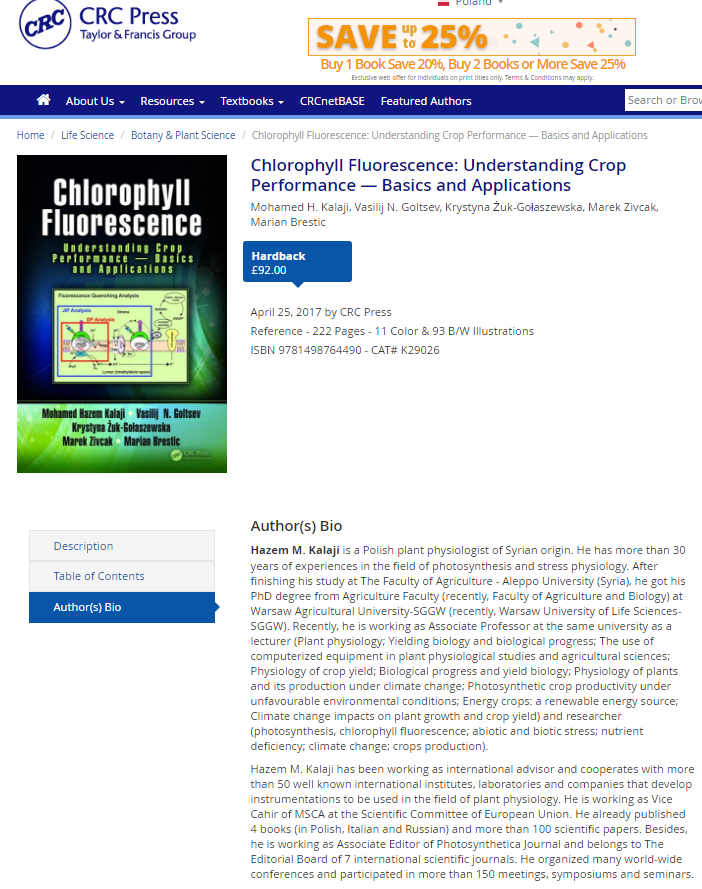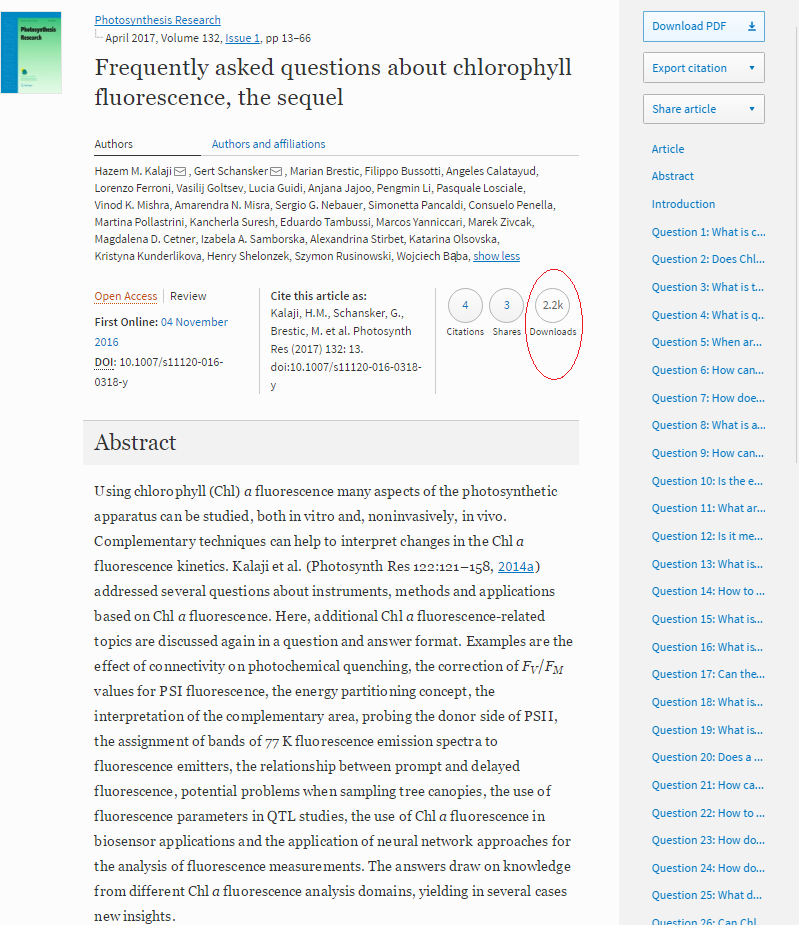New book about chlorophyll fluorescence
Project Guidance
Hazem M. Kalaji
May 2017


Dear Respected Colleague,
I am pleased to inform you about our new published book by CRC press:
Inline images 1
Hardback £92.00 April 25, 2017 by CRC Press Reference - 222 Pages - 11 Color & 93 B/W Illustrations ISBN 9781498764490 - CAT# K29026
Features Describes physiological meaning, calculations and applications of numerous chlorophyll fluorescence parameters. Discusses the photosynthetic processes in thylakoid membranes resulting in generation of the delayed fluorescence quanta emission. Explains the relationship of the 820 nm light reflection with linear and cyclic photosynthetic electron transport. Examines the applications of simultaneous measurement of chlorophyll fluorescence with other signals. Compares the information that could be provided from chlorophyll fluorescence signals at direct measurement and modulated fluorescence method. Illuminates complex processes in plants correlation with chlorophyll fluorescence signals. Summary Chlorophyll a fluorescence is a tool for evaluating plant responses to stress conditions. Fluorescence can be used in plant phenotyping and breeding programs to monitor biotic and abiotic stresses including mineral deficiencies, soil salinity, and pathogenic diseases. Chlorophyll Fluorescence: Understanding Crop Performance — Basics and Applications reviews a diversity of instruments available for recording and analyzing different types of light signals from plants and addresses the use of chlorophyll a fluorescence in research on plants and other photosynthesizing organisms, such as algae and cyanobacteria.
This book characterizes the phenomenon of chlorophyll a fluorescence, describes the methods for its measurement, and demonstrates — using selected examples — the applicability of these methods to research the response of the photosynthetic apparatus and plant tolerance to unfavorable environmental conditions. In addition, chapters cover a general background on photosynthesis, analysis of delayed fluorescence, and the pulse amplitude modulated (PAM) technique. The book is addressed to a wide range of professionals in photosynthesis research and scientists from other areas of plant sciences.
I am also pleased to inform you about our new published paper related to chlorophyll fluorescence, which has been downloaded over 2000 times within few months:
Inline images 1
Please distribute the above enclosed information to your friends/readers/organizations' members/distributors and customers. Please also feel free to publish it at your web site, Twitter handle and FB.
Kind regards,
Hazem M. Kalaji PhD, DSc
Associate Professor
http://agrobiol.sggw.pl/fizjologia/pages/english/personnel/phd-hazem-kalaji.php Warsaw University of Life Sciences (SGGW), Warsaw, PL
http://www.sggw.pl/o_pracowniku&employee_id=1198042
Director for Research and Technical Development (RTD), SI Technology, PL
cid:563415210@02102012-093E European Commission
Vice Chair of The Scientific Committee MSCA, Assessor of ‘HR excellence in research’ award evaluation, European Research Area Associate Editor - Photosynthetica, Springer, CZ
Member of UK Controlled Environment Users' Group, UK
Member of The Science Advisory Board, USA
Polish Scholarly Bibliography (PBN) ID: 922205
Researcher ID: E-8086-2012 - http://www.researcherid.com/rid/E-8086-2012
ORCID: http://orcid.org/0000-0002-3833-4917
Scopus Author ID: 6504454079 - http://www.scopus.com/authid/detail.url?authorId=6504454079
Phone: +48 664 943 484 Email: hazem@kalaji.pl
https://sites.google.com/kalaji.pl/123/home